According to recent estimates, well over a third of the milk produced in the U.S. is used to make cheese. Yup, you read that right!
Put together with the fact that there are over 1800 varieties of cheese produced all over the world, it’s easy to see why cheese is a hugely popular ingredient in several cuisines.
From sweet to savory dishes and appetizers to main courses to desserts, cheese adds rich flavor and texture to food that’s hard to replicate with other ingredients. Speaking of cheese, two types are often confused as being the same: ricotta and cottage cheese.
Although they might look similar, ricotta and cottage cheese differ in their texture, composition, flavor profile, and culinary uses.
Ricotta is derived from the leftover whey after curds are separated from milk, whereas cottage cheese is the curd produced when an acidic agent is added to milk.
Ricotta is creamier and has a higher calorie and fat content when compared to cottage cheese. This makes ricotta suitable for use in stuffed pasta, lasagna, and cheesecake. By contrast, cottage cheese can be consumed as is or with a serving of fresh fruit.
Let’s look at what makes ricotta and cottage cheese so different in some more detail.
Ingredients and Production Process for Ricotta vs Cottage Cheese
Whey in ricotta
The primary ingredient required to produce ricotta is whey, the leftover liquid after a cheese manufacturing process. Instead of discarding whey, Italian cheese makers recooked the watery liquid and thus, ricotta was created.
In fact, the name ricotta comes from the Latin ricocta, which means recooked. Interestingly, ricotta is just one of the many whey cheeses that belong to the Brocciu family.
Traditional cheese making involves heating cow, sheep, goat, or buffalo milk until it curdles and separates into curds and whey. The curds are then strained to yield cheese, and the whey undergoes further processing.
Whey that is collected as a by-product of the processing of hard cheeses, such as Romano, is typically used for making ricotta cheese.
While hard cheese contains casein, a type of protein, whey can carry up to 50% of the milk solids present in whole milk, including concentrated amounts of globulin and albumin proteins.
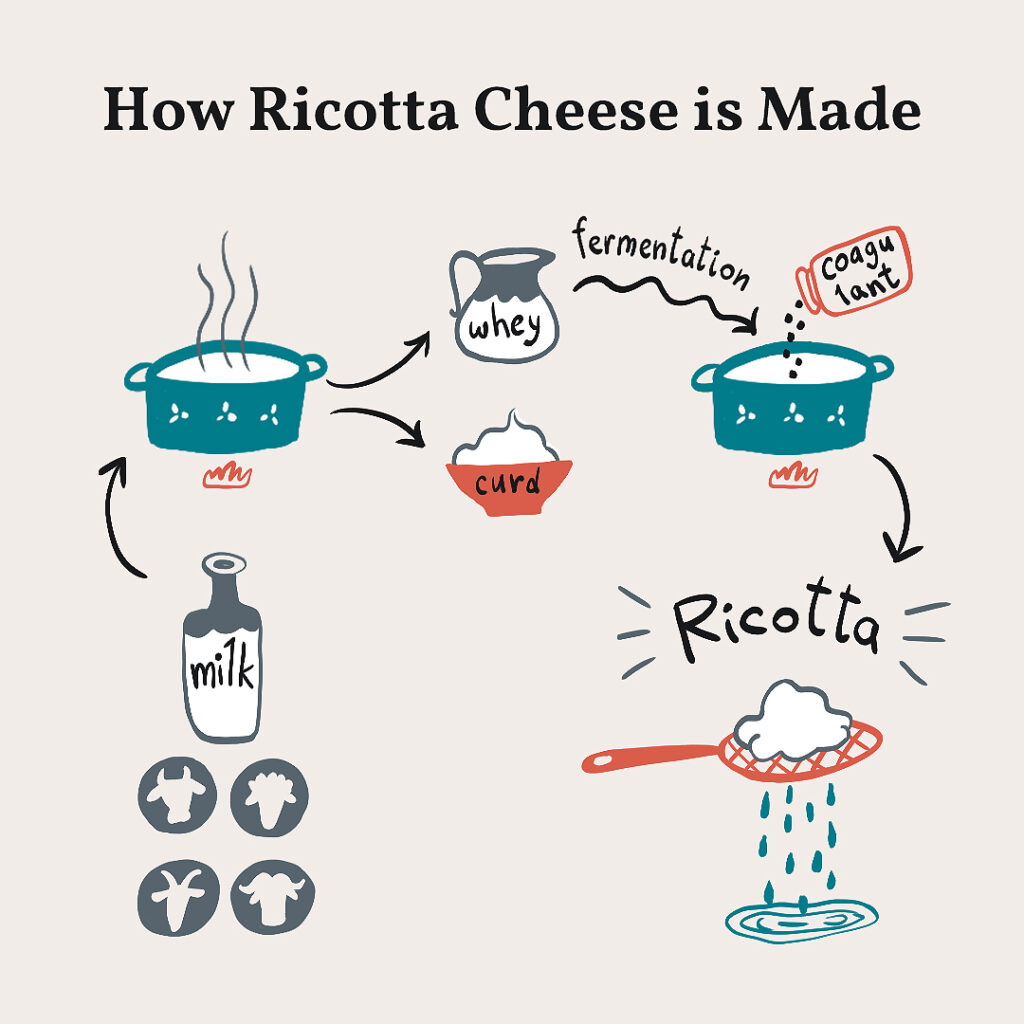
Whey is further processed by allowing it to ferment at room temperature for anywhere between 12-24 hours. Following this, a coagulant can be added and the liquid is reheated till near boiling point. The combination of heat and coagulants causes the proteins in whey to denature (break down) and separate from the liquid. Straining this liquid leaves behind the soft cheese, ricotta.
American producers of ricotta add whole or skimmed milk to whey, which produces a creamier and more moist cheese. It is important to note that both types of ricotta are fresh cheeses and hence, are highly perishable.
Skim or full-fat milk in cottage cheese
Let’s talk about cottage cheese. This variety of unripened, fresh cheese is commercially produced from skimmed milk or reconstituted, low-fat milk products. It is also possible to produce cottage cheese from full-fat milk.
A bacterial culture and rennet is added to milk to promote curdling and coagulation. The mixture is then gently heated until it reaches a set temperature (usually ~90 °F) and kept at that temperature for several hours. The resulting curds are separated from the whey by straining and pressing out any remaining liquid.

The curds are then rinsed with water. Following this, manufacturers usually add salt and a choice of skim milk, whole milk, or cream that lends a soupy consistency to cottage cheese. At this stage, it is also possible to add other flavoring agents and ingredients such as chives or pineapple.
Texture and Appearance
Ricotta
Being a fresh cheese, ricotta is soft and creamy with a slightly grainy consistency from the coagulation of whey proteins. Fresh ricotta is spreadable and has a mild, subtly sweet flavor.
There is, however, a distinction between American ricotta and the original, Italian version. While Italians produce ricotta from the whey of buffalo, goat, sheep or cow milk, American producers exclusively use cow milk. Traditional Italian ricotta is slightly sweeter and less moist when compared to American ricotta.
It is important to note that other variants of ricotta exist, such as ricotta salata, the aged and salted variety that falls under the category of ripened cheeses.
Unlike fresh, creamy ricotta, ricotta salata is drier and has a crumbly texture that is comparable to feta cheese. This mature ricotta is often used in salads and as a finishing topping for pasta dishes.

Cottage cheese
On the other hand, cottage cheese is marked by a noticeably lumpy texture due to the presence of curds. Available in small, medium, and large-curd varieties, cottage cheese is also creamy and incredibly moist.
When compared to fresh ricotta, cottage cheese has a higher sodium content and is lumpier and wetter.

Flavor Profile
Ricotta
Fresh ricotta has a subtle sweetness to it that is not overpowering, making it suitable for use in both savory and sweet dishes. By contrast, cottage cheese is characterized by a salty, slightly acidic flavor.
When compared to other types of cheese, such as mozzarella, cheddar, and parmesan, ricotta has a lower calorie and fat content. You wouldn’t guess it from the creamy texture, though.
This makes ricotta a low-fat substitute for these types of cheese in dishes such as pasta or lasagna, panini sandwiches, or even desserts like cheesecake.
Cottage cheese
The tangy flavor of cottage cheese makes it a suitable accompaniment to fresh fruit salads and an excellent substitute for sour cream in dips. In a pinch, cottage cheese also makes for a reasonable substitute for greek yogurt in overnight oat parfaits.
Although both types of cheese have a creamy texture, cottage cheese tends to lean on the saltier side, owing to the addition of salt during production.
Nutritional Value
According to the U.S. Department of Agriculture (USDA), a 100 g serving of whole-milk ricotta contains 150 calories. You also get 7.5 g of protein and over 10 g of fat per serving.
When it comes to cottage cheese, a 100 g serving provides under 100 calories while contributing 11 g of protein and 4 g of fat to your diet.
Let’s compare these figures with the nutritional content of eggs to put things into context. A 100 g serving of hard-boiled eggs (approximately two medium-sized eggs) contains around 155 calories, nearly 13 g of protein, and 11 g of fat.
Thus, whole-milk ricotta has a comparable nutritional profile to hard-boiled eggs, except for protein, which is slightly lesser in ricotta. On the other hand, cottage cheese contains much less fat and calories and fares reasonably well in terms of protein.
Cottage cheese is higher in protein
Other nutrients aside, cottage cheese is a protein-rich, low-calorie, and low-fat food that is incorporated into a diet as part of a healthy lifestyle.
However, if you much rather have ricotta than cottage cheese, you get up to 2.5 times the amount of calcium and magnesium and twice the amount of iron and potassium. Ricotta also cuts your sodium intake by a third when compared to cottage cheese.
At this point, it’s important to emphasize that your choice of cheese must depend entirely on the type of dish you’re preparing, your personal health considerations and diet goals, and your taste preference.
Best Uses in Cooking and Baking
Ricotta is perhaps most widely used in lasagna, stuffed pasta shells such as ravioli, and desserts such as cannoli, although its versatility makes it suitable for use in everyday cooking.
You can add ricotta to scrambled eggs or as an omelet filling, use it in baked cheesecake recipes, add ricotta to pasta sauces and dips, spread it on toasted baguette slices with tomatoes for a quick bruschetta, or even bake it to serve as a party appetizer.
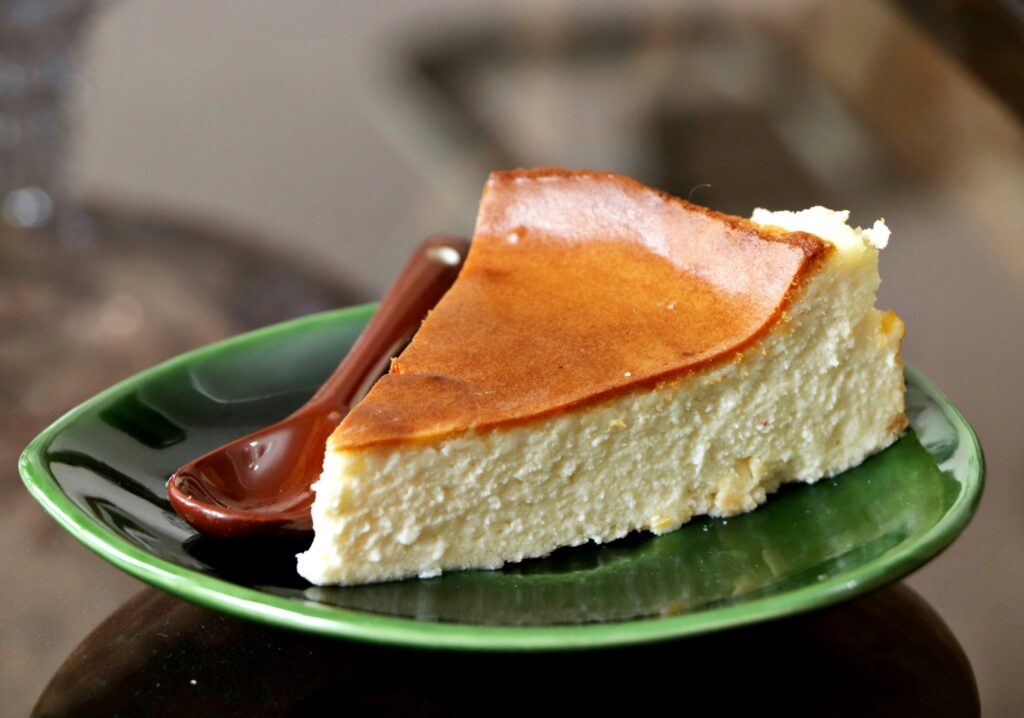
Although you can substitute ricotta for mozzarella in pizzas, ricotta doesn’t melt the same way that mozzarella does and won’t be as stringy.
Cottage cheese pairs well with fresh fruit in fruit salads and smoothies amp up the protein content of scrambled eggs and makes for creamier mashed potatoes.
You could substitute ricotta with cottage cheese in stuffed pasta and lasagna; however, do this only if you want to cut down on fat and calorie content or if you have run out of ricotta. Remember, cottage cheese is a lot more wetter than ricotta, so your dishes will be runnier unless compensated for.
Our pro tip: strain the cottage cheese to remove some of the liquid and whip it up just before adding it to a dish to reduce lumpiness. It is also a good idea to reduce the amount of added salt if you are using cottage cheese.
This will not save your cheesecakes and other baked goods though, as baking is more of an exact science. So, it is not advisable to use cottage cheese in baking, unless the recipe calls for it.
Insider’s Insight
To summarize, ricotta and cottage cheese are different products – ricotta is a type of cheese extracted from leftover whey after the processing of hard cheese, while cottage cheese is made from the curds formed during the curdling of skim or low-fat milk.
Ricotta is generally made from sheep, goat, buffalo, or cow milk, while cottage cheese always uses cow milk.
Both ricotta and cottage cheese are fresh, soft cheeses, and are highly perishable. Ricotta has a creamy consistency and a slightly sweet flavor, whereas cottage cheese is visibly lumpy and wetter and carries a salty, tangy flavor.
Cottage cheese is popular because of its high protein, low calorie, and low-fat content when compared to ricotta, although the latter contains much higher levels of other minerals.
Cottage cheese and ricotta can be used interchangeably to a degree, especially in pasta, lasagna, or scrambled eggs. However, ricotta cannot be substituted with cottage cheese in cheesecakes.
The choice between ricotta and cottage cheese depends much on the consistency of the dish being prepared, how close you want the dish to be to traditional recipes, and your diet, nutrition, and taste considerations.
We hope this will help you make an informed choice the next time you reach out for a tub of ricotta, cottage cheese, or both (why not!) at the grocery store. Happy cooking!

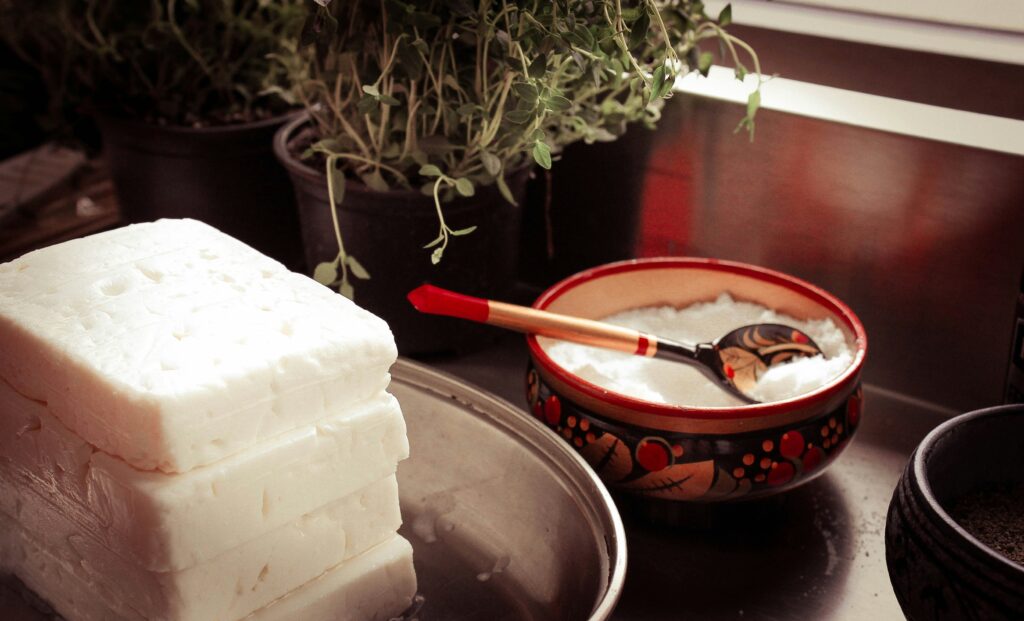
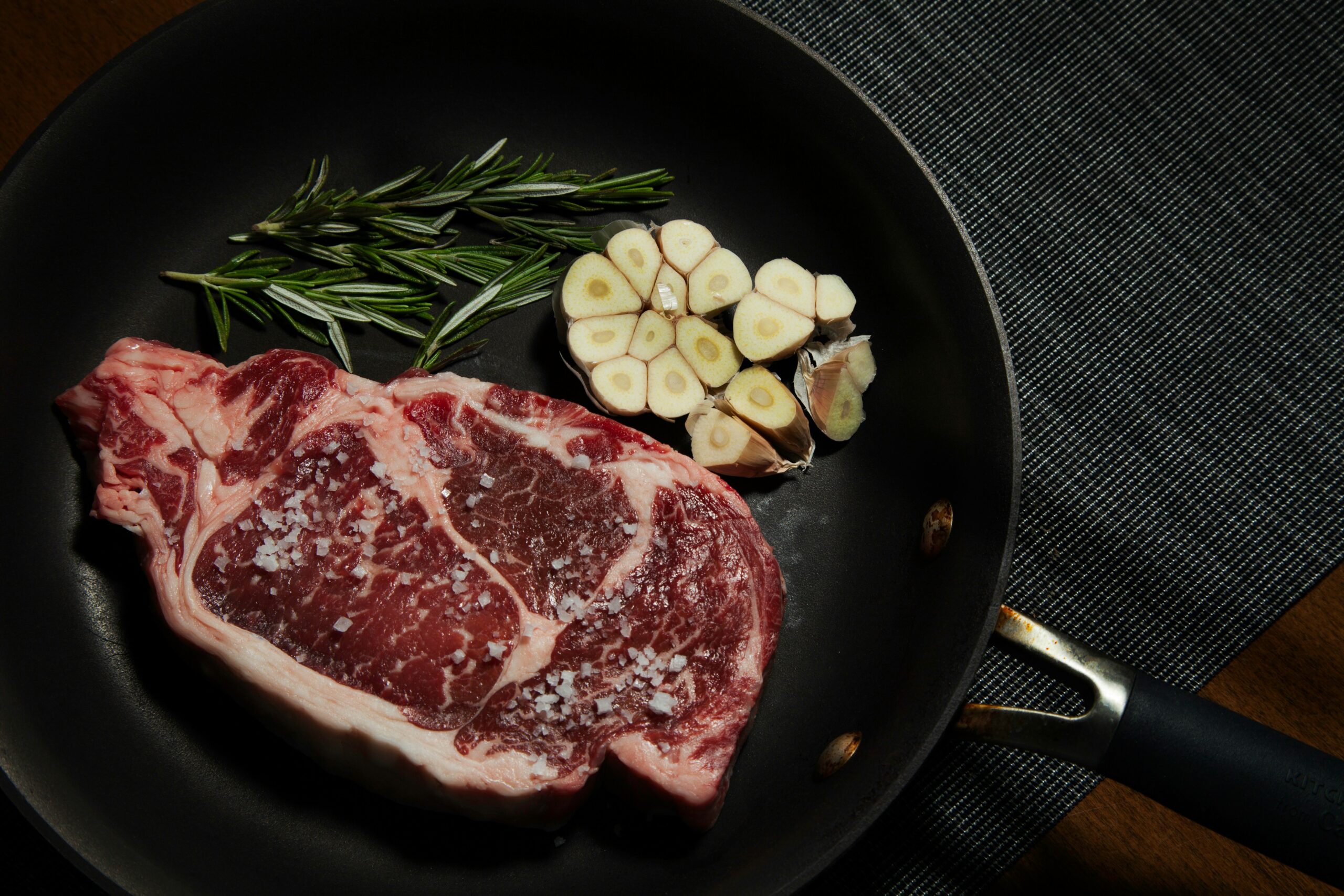
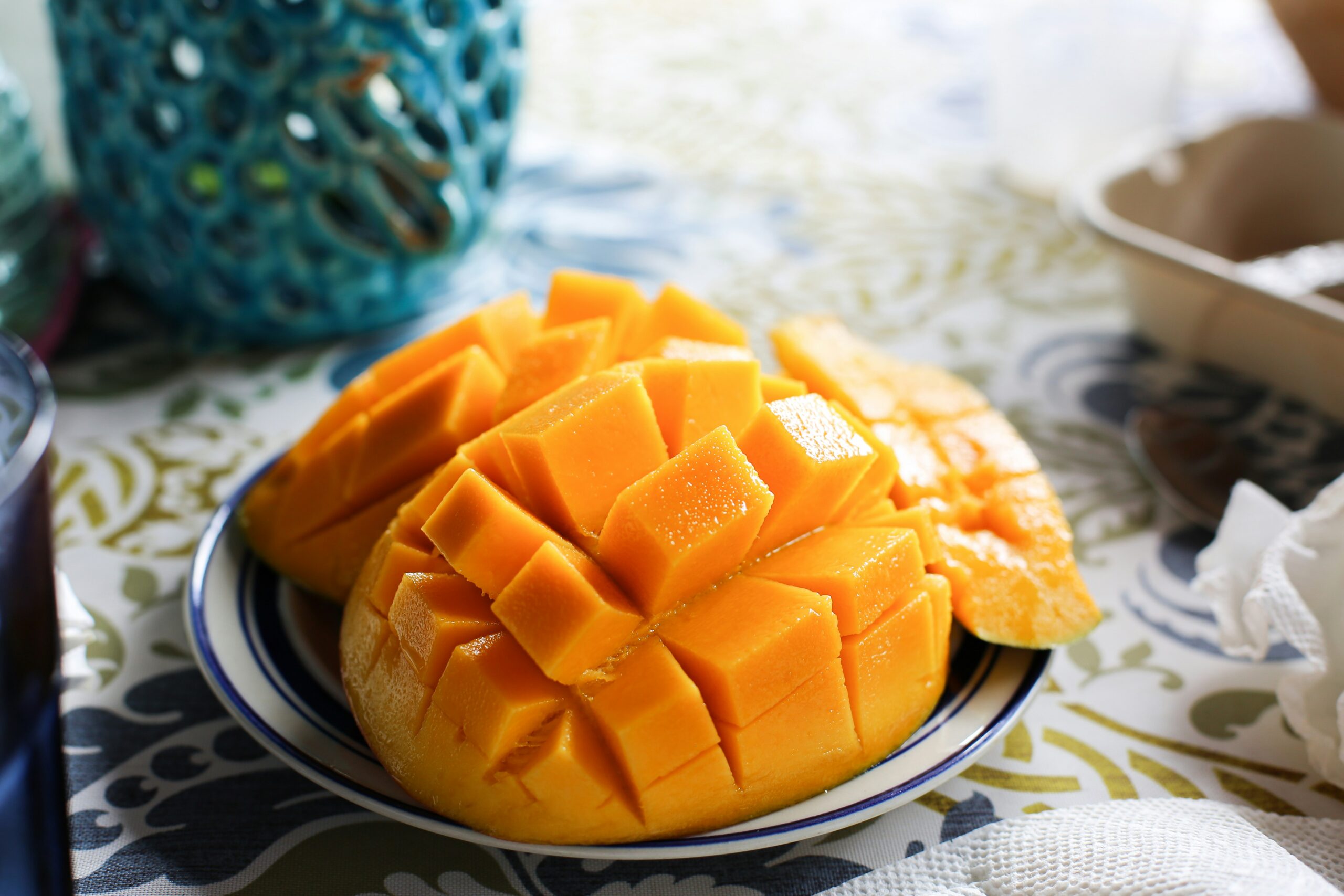
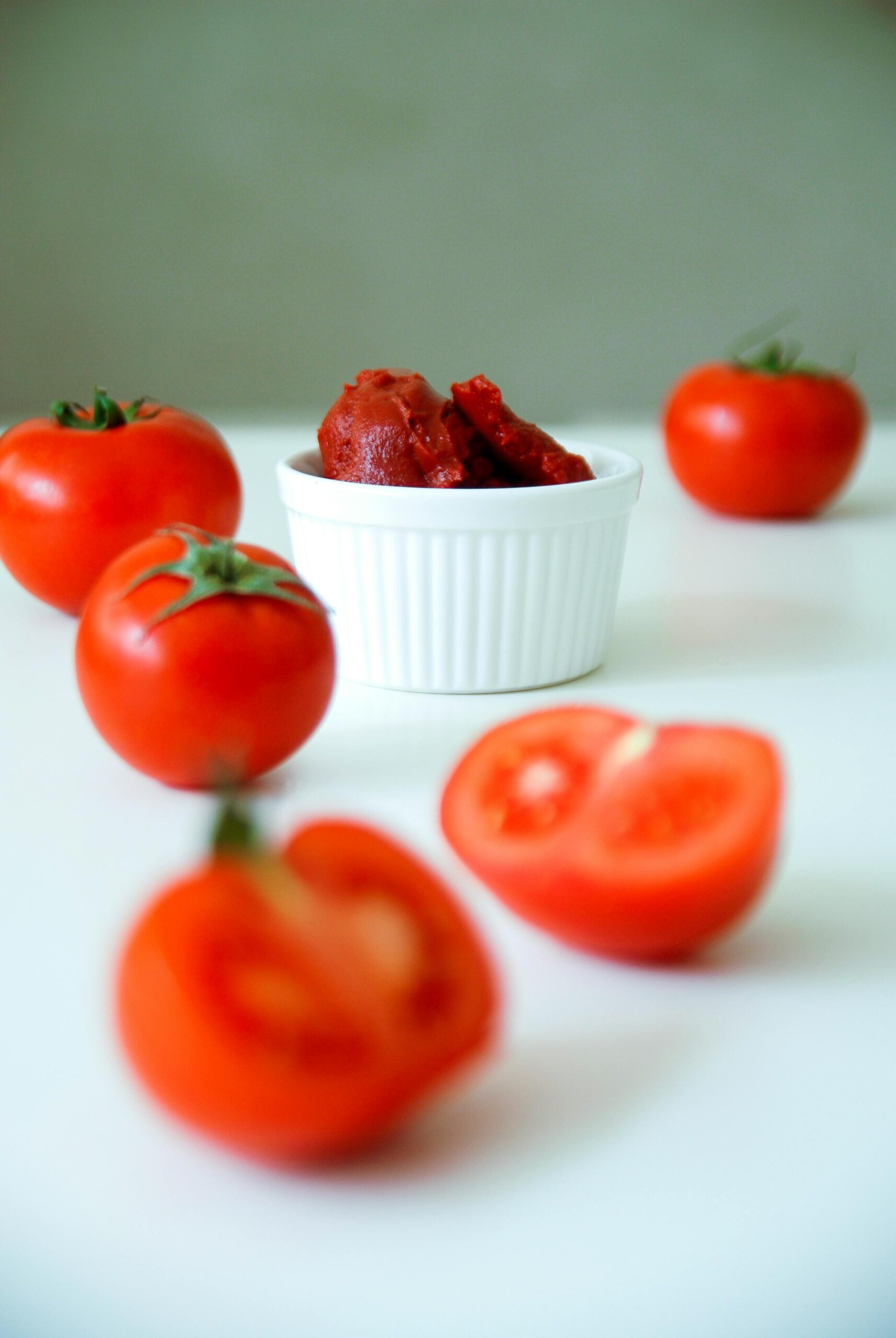

Leave a Reply